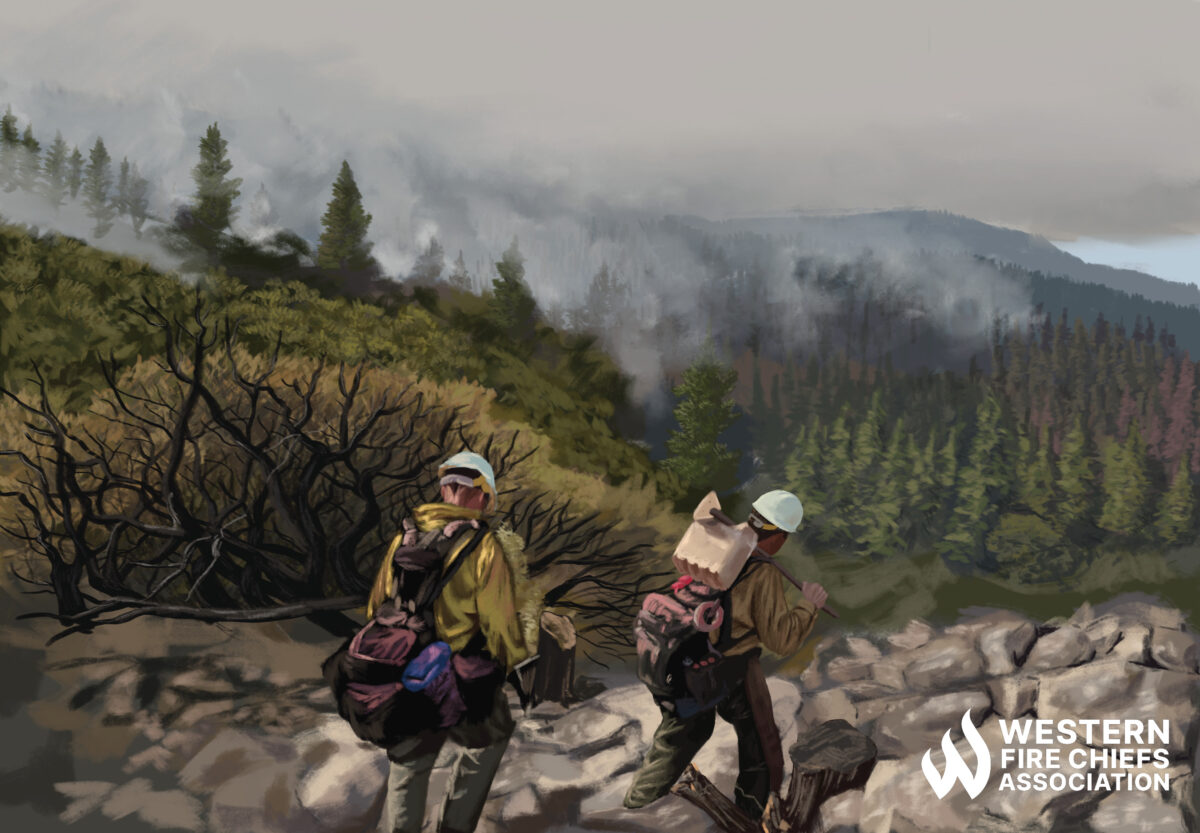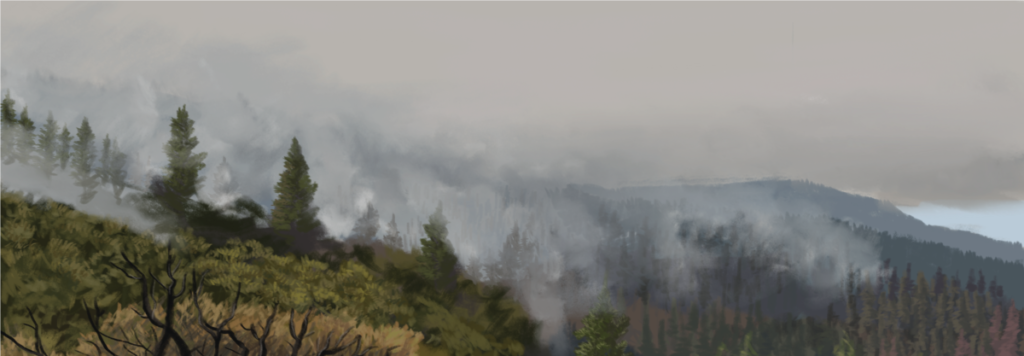Fire Pit Safety Tips
Stay safe around the campfire with tips from the Western Fire Chiefs Association. Learn essential precautions and practices for a worry-free outdoor campfire.
Find out when wildfires occur and where they are most likely to happen with detailed information from the Western Fire Chiefs Association (WFCA).
Published:October 18, 2022
Edited:April 24, 2024

Find out when wildfires occur and where they are most likely to happen with detailed information from the Western Fire Chiefs Association (WFCA).
A wildfire is any unplanned or uncontrolled fire that burns in a natural area such as a forest, or grassland. Wildfires typically start in natural or rural areas, but they can occur anywhere and may spread to more populated areas, threatening homes and human communities.
Wildfires can start in various ways. Natural phenomena, such as lightning strikes or volcanos, can ignite a wildfire. However, the most common cause is human activity. In fact, human activity is the cause of nearly 90% of wildfires in the US.1 Discarded cigarettes, unattended campfires, burning debris, and equipment or vehicle malfunctions are all examples of how human errors can ignite wildfires.
Depending on weather conditions and the environment, wildfire can spread rapidly and leave devastation in its wake.
Firstly, fire needs fuel. In the natural environment, overgrown forests, dry brush, and vegetation can all act as fuel, and the drier it is, the more quickly a fire can grow.
Weather conditions also contribute to the spread of wildfire. Drought, high temperatures, and high wind speed all affect fire behavior and can make wildfires larger, hotter, and faster.
Just as weather conditions contribute to the spread of wildfire, they can also help to hinder it. Rain or snow will quickly dampen the earth, vegetation, and other fuels so that fires cannot ignite. Precipitation often means that the temperatures drop and wind speed slow, helping to stop the spread
Topography can play a role too. Wildfires tend to spread faster uphill than downhill because heat rises, so a fire heading uphill will dry out and preheat the vegetation ahead of it.
There are a number of species that have evolved to depend on wildfires for their continued survival. Some tree cones need to be heated to release their seeds. Other plants, like scrub oak, rely on fire to germinate their seeds.
Wildfires that do not burn for too long keep ecosystems healthy by killing insects and diseases that harm plant life. At low intensities, wildfires can help to clear the forest floor and canopy to allow sunlight to reach the ground, as well as add nutrients to the soil. Both of these factors allow new plant life to flourish.
According to the European Space Agency, fire affects an estimated 4 million square kilometers of the earth’s land each year – about half the size of the United States!2
Wildfires occur all over the world. Forested areas, grasslands, and shrublands in places such as the United States, Canada, Australia, Western Cape of South Africa, and Southern Europe are particularly susceptible, especially if the area is experiencing an extended period of drought and high temperatures.
California, and other Western states of the US, are particularly prone to wildfire. The region’s vegetation – pine needles, dry shrubs, and grasses – are more flammable than forests in other parts of the country, where moister trees, such as maple and beech, are found.
The mild and dry climate in the Western US is also conducive to fires. California experiences long, hot, and dry summers, which parches the vegetation, making it vulnerable to wildfire.

Prime time for wildfire depends on summer temperatures, rainfall, and wind. In California, most fires have historically occurred between May and October. However, recent data has shown that the season is lengthening, with wildfires starting earlier in the year and lasting well into the fall and winter months.3
The longer fire season is attributed to climate change, which has a significant impact on the prevalence of fires around the world. Changes in climate are creating drier, warmer seasons, which create the ideal conditions for fires to burn. This not only increases the frequency of fires but their severity too.
As experts study the lengthening wildfire season, many agree that a year-round fire season is becoming the new reality, particularly in Southern California where the first significant rainfall often does not take place until November or December.3
In the US, Alaska, Arizona, California, Colorado, Idaho, Montana, New Mexico, Nevada, Oregon, Utah, Washington, and Wyoming suffer from the largest and most destructive wildfires. In 2021, just over 23,000 wildfires burned approximately 6.2 million acres in the West, compared with the over 35,000 fires that burned just under 1.0 million acres in the East.1
In recent decades, California has experienced some of the largest and most destructive wildfires in US history. The summer of 2020 was the worst fire season on record. A total of 10,431 fires occurred, causing more than 4 million acres to burn. The largest wildfire in the country in 2020 (and the largest fire complex in California history) was the August Complex fire.4
Stay safe around the campfire with tips from the Western Fire Chiefs Association. Learn essential precautions and practices for a worry-free outdoor campfire.
Discover essential firework safety tips to ensure a dazzling display without accidents. Learn how to celebrate responsibly with expert guidance from WFCA.
Explore the role of AI in wildfire prediction with guidance from the WFCA. Learn how advanced algorithms and data analytics enhance early detection and response.